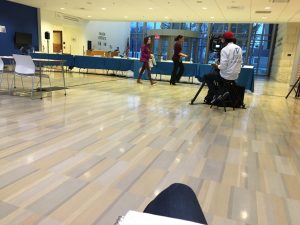School Closings: What’s the Message?
Lily Jewell and Sarah Clancy
When schools are closed, students do not just move to another and continue on with their daily lives. They are forced into new cramped classrooms with lower student to teacher ratios. Not only does it impact their physical environment, but it also sends a message to the students and parents within the communities. At this months Hartford Board of Education meeting, Dr. Benjamin Foster took the chance to express his concerns with the upcoming Hartford Public School closing in the north end of Hartford. The Hartford Board of Education holds “regular meetings”, which are intended to set goals, listen to the superintendents speak and budgets, but not specifically manage or solve individual problems. One of the biggest topics of conversation at this meeting had to do with the recent announcement of several schools closing due to their underperformance, and students not acting according to their grade level. Foster was speaking on behalf of the NAACP and the community concerned about the closing of several schools. The north end of Hartford is notoriously known for having low-income households, there is a poverty rate of 49.35%, which is much higher than the city’s high poverty rate of 33.9%.(http://www.hartford.gov/demographics-nhpz)
For Dr. Benjamin Foster, his concern is not about the logistics or forcing students to relocate. His concern had to more about the messages it sends to the families of these communities. It sends these families a bad message, a message that they do not meet the expectations of society. And he hopes that the Board of Education can monitor these effects closely. Foster powerfully stated, “We want to again reiterate the devastation that it causes communities when schools are missing. Parity and equity should be the key in whatever decisions that you make. We will monitor this very stringently….”
One way he recommended fixing this is by constantly forcing the images of individuals from Hartford who made it. He even proposed examples of individuals who would be the perfect fit for this role. He referenced Charles Stone, who is now a big time journalist, and also a Hartford High graduate. He wants to see individuals such as Stone across the walls of Hartford public schools, to show the students they can become great too. It will give them a goal to strive for. Although Foster, is concerned about the traumatic effect of these schools closing he was still willing to propose ways to help the students even when moving forward in these devastating conditions.
Foster was not the only person unsettled by the closing of public schools in the north of Hartford. A mother, Shelly Davis, also raised her concerns who was followed up to the microphone by four other women, all wearing matching blue shirts to show solidarity with Shelly. Shelly stated that it was unfair for those schools to be closed because it would force her child and many other students to be bused to schools in the south end of hartford, where the teacher to student ratio would be dismal. It is important to notice that the closing of these north end Hartford public schools has not only caught the attention of parents, but also members of the education committee at the NAACP. The concerns are all across the community, and the Board of Education must listen in order to move forward in a way that will best benefit the students.
Outside Links-
Statistics-
http://www.hartford.gov/demographics-nhpz
Dr. Benjamin Foster Biography-
http://www.hartford.edu/aboutuofh/empowering-change/speaker-bios/benjamin-foster-new.aspx
NAACP and NAACP Education committee-
Charles Stone-
http://www.dailyherald.com/article/20140407/news/140408758/

